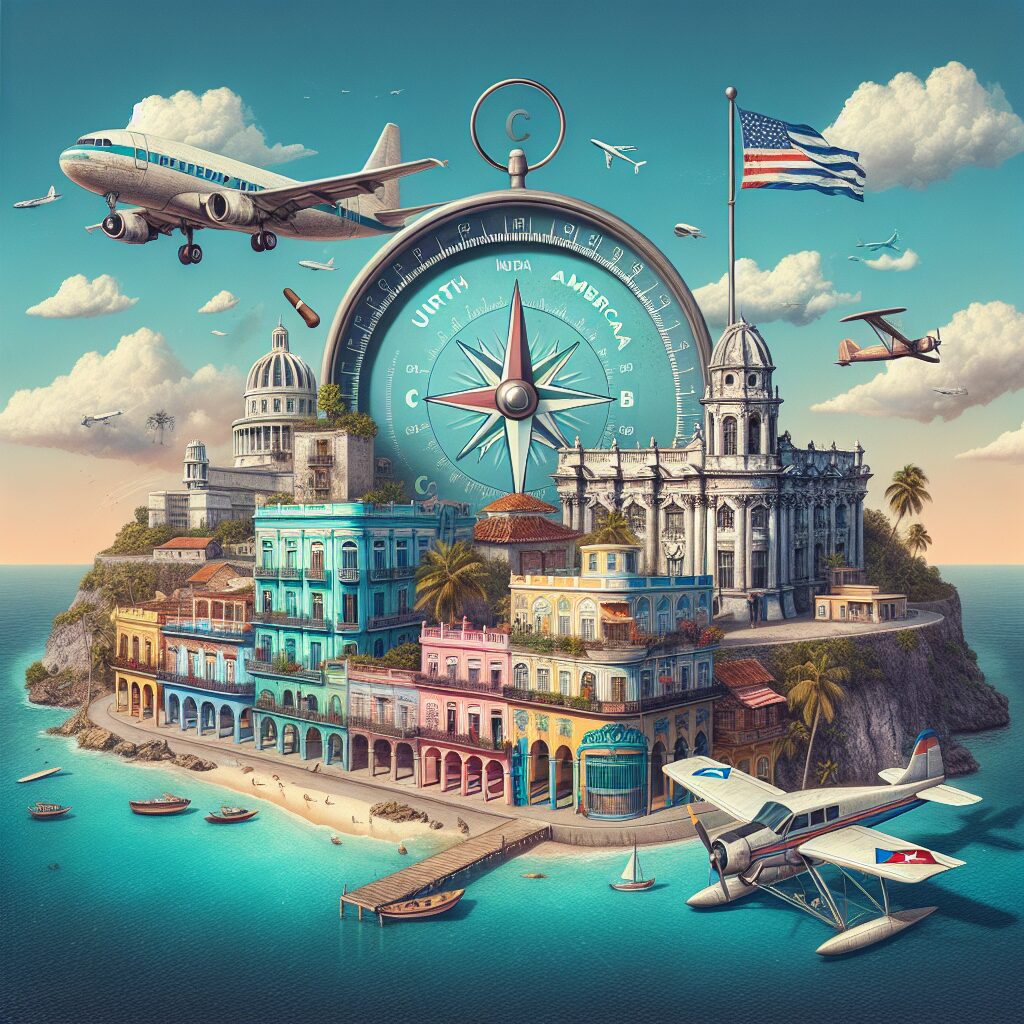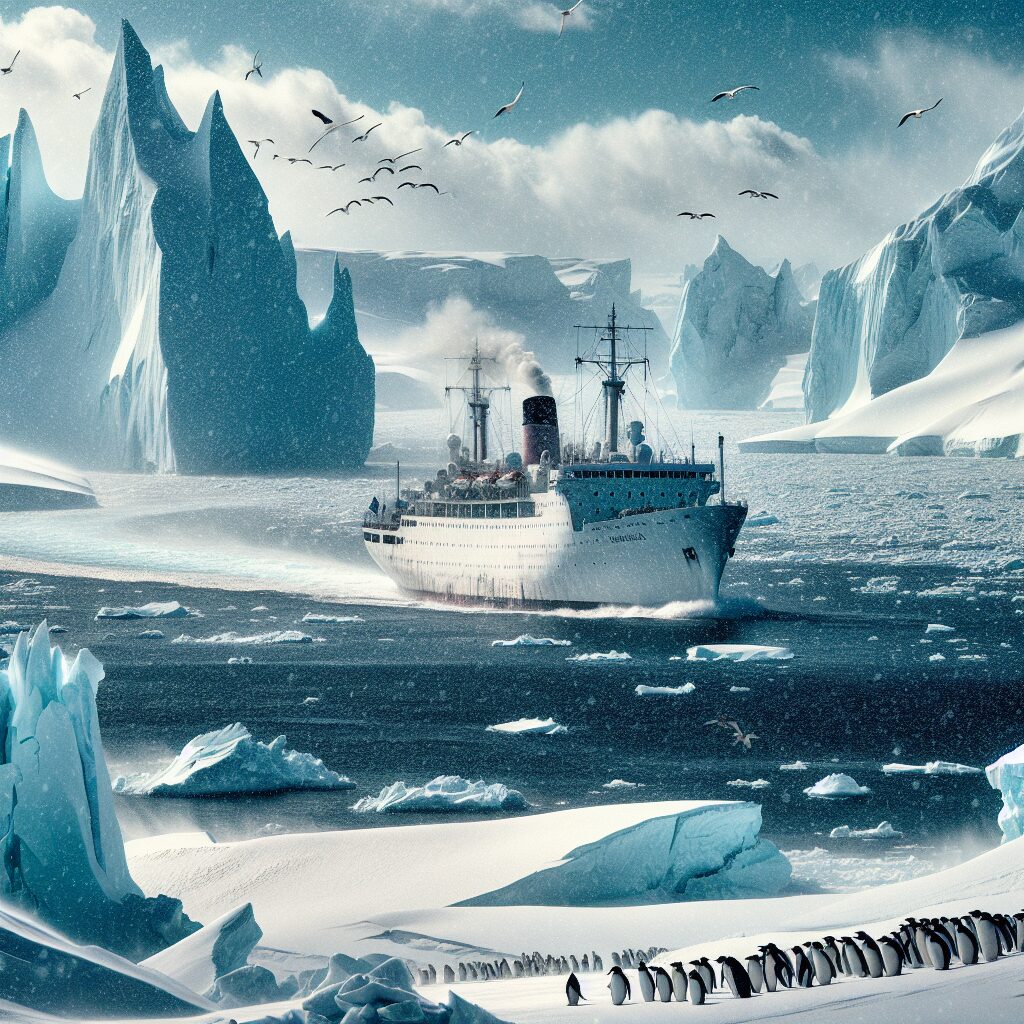Nestled in the heart of the Caribbean, Cuba stands as a bastion of historical intrigue and cultural richness—its shores a testament to a complex past that continues to echo into the present. For U.S. citizens, the island presents a tapestry of experiences unlike any other; however, due to a tumultuous political relationship, travel to Cuba has often been shrouded in layers of restrictions and regulations. Despite the cooling relations since the Cold War, recent years have seen a slight relax in constraints, allowing for more Americans to explore the vibrant streets of Havana, indulge in the country’s storied history, and interact with its warm, resilient inhabitants.
As we delve deeper into the vivid subject of travel from the United States to Cuba, key takeaways emerge for the curious traveler: from understanding the existing travel restrictions to unpacking the logistics of planning a trip, these significant points serve as a compass to navigate the complexities involved. The next part of our article will unveil the essential information that prospective visitors need to know, such as the various categories of authorized travel, how to obtain the necessary travel licenses, and the implications of the current political landscape on cultural exchange and tourism—an invaluable primer for anyone considering a journey to this intriguing nation.
Essential Insights
1. Despite the complex history between the United States and Cuba, U.S. citizens can still travel to Cuba, but they must fall under one of the 12 categories of authorized travel. These categories include family visits, professional research, public performances, religious activities, humanitarian projects, and educational activities, among others. General tourism pure and simple is currently not permitted for U.S. citizens.
2. To travel to Cuba, U.S. citizens are required to obtain a Cuban Tourist Card, also known as a visa. This can usually be purchased through the airline with which they are traveling or in some cases through the Cuban Embassy or Consulate. Travelers must also carry travel insurance that includes coverage for medical expenses in Cuba, as it is mandatory.
3. When in Cuba, U.S. citizens must keep receipts of all their economic transactions for five years as proof of compliance with U.S. laws. The U.S. government prohibits certain transactions with restricted entities in Cuba, primarily those affiliated with the military, intelligence, or security services, so travelers should be informed and cautious about their spending.
4. Direct commercial flights between the United States and Cuba are available, but the number of routes and frequency might change due to evolving regulations. In addition to flights, there are also cruise options; however, these too are subject to U.S. regulations and may have restrictions, especially in light of the June 2019 ban on cruise ships traveling between the U.S. and Cuba.
5. U.S. citizens are allowed to bring back certain goods from Cuba, including up to $800 worth of merchandise for personal use every 31 days, duty-free. This amount includes up to 100 cigars and one liter of alcohol. Items must be transported in accompanied baggage and cannot be sent by mail or courier. Higher quantities will be subject to duty taxes, and certain restrictions apply to bringing back artwork or antiques.
Is It Possible for U.S. Citizens to Visit Cuba?
Travel Restrictions and Licenses Required
For U.S. citizens contemplating a trip to Cuba, understanding the travel restrictions is imperative. Travel to Cuba for tourist activities remains prohibited by statute. However, the Department of Treasury’s Office of Foreign Assets Control (OFAC) has outlined some exceptions. Travelers must fall into one of the 12 categories of authorized travel, which includes family visits, official business of the U.S. government, journalistic activity, professional research and meetings, educational activities, religious activities, public performances, support for the Cuban people, humanitarian projects, activities of private foundations, exportation, importation, or transmission of information, and certain authorized export transactions.
Visa and Documentation for U.S. Citizens
To enter Cuba, U.S. citizens must have a valid passport and obtain a Cuban tourist card or visa. The type of visa required depends on the purpose of the visit and must align with OFAC regulations. Some airlines offer the option to purchase a tourist card before boarding your flight, or upon arrival in Cuba, but it’s essential to ensure it matches the travel category under which you’re licensed to travel.
Flights to Cuba from the United States
Direct flights between the U.S. and Cuba were once greatly restricted, but the landscape is changing. Today, various airlines offer scheduled service, allowing for more easily arranged trips compared to the past when charters were the primary option. It’s critical to stay updated on the current airline options and to book flights well in advance due to demand fluctuations and regulatory changes.
Accommodations and Lodging in Cuba
U.S. citizens visiting Cuba have options for accommodation ranging from state-run hotels to private rentals. However, a list of restricted entities published by the U.S. State Department prohibits transactions with certain hotels and businesses in Cuba. Travelers are encouraged to thoroughly check this list before making any lodging arrangements to ensure compliance with U.S. regulations.
Money and Currency Exchange
The Cuban government officially recognizes two currencies: the Cuban Peso (CUP) and the Cuban Convertible Peso (CUC). U.S. credit and debit cards generally do not work in Cuba, so travelers must be prepared with enough cash to exchange upon arrival or at official currency exchange locations. Knowledge of the current exchange rates and conversion fees is also vital to budget effectively for the trip.
Health Insurance and Medical Services
Visitors to Cuba are required to have health insurance recognized by the Cuban government. U.S. health insurance policies often do not provide coverage in Cuba, but travelers can purchase Cuban health insurance from travel agencies or airline services. Additionally, the standard of medical facilities and services in Cuba differs significantly from those in the U.S., and it’s advised to understand this before traveling.
Communication and Internet Access
Internet access in Cuba is improving but remains limited compared to U.S. standards. Wi-Fi is found mainly in larger hotels and designated Wi-Fi hotspots. U.S. mobile phones may not work in Cuba, and if they do, roaming charges can be exorbitant. Purchasing a local Cuban SIM card for an unlocked phone or renting a mobile phone can be considered for staying connected.
Are There Tips for U.S. Citizens Planning to Travel to Cuba?
- Review and understand the OFAC’s 12 categories of authorized travel before planning your trip.
- Ensure you have the proper visa that corresponds with your license to travel.
- Check the U.S. State Department’s list of restricted entities in Cuba when arranging accommodations.
- Prepare to have sufficient cash in hand, as credit and debit cards issued by U.S. banks typically do not work.
- Arrange for health insurance that is valid within Cuba, and be aware of the medical services infrastructure.
- Plan for limited internet access and potential communication hurdles while in Cuba.
Is it legal for US citizens to travel to Cuba?
Yes, it is legal for US citizens to travel to Cuba, but there are restrictions in place by the US government. Travel for tourism purposes alone is not currently permitted, but there are 12 categories of authorized travel, including family visits, professional reasons, educational activities, public performances, and humanitarian projects.
Do I need a special visa to enter Cuba as a US citizen?
US citizens traveling to Cuba will need a tourist card, which is similar to a visa, obtainable from Cuban embassies or consulates, certain airlines, or a travel agency. The tourist card allows you to stay in Cuba for 30 days and can be extended for another 30 days.
Can I fly directly from the United States to Cuba?
Yes, there are direct flights from the United States to Cuba. Several US airlines operate flights to Havana and other Cuban cities, but the number of flights and destinations may be limited due to regulatory changes.
Are there any restrictions on spending money in Cuba for US citizens?
US citizens are subject to certain financial restrictions while in Cuba. Transactions involving certain state-run businesses and entities on the US restricted list are prohibited. However, private transactions, such as staying in private accommodations and eating at private restaurants, are typically allowed.
What should I know about health insurance when traveling to Cuba?
Cuba requires all visitors to have non-US medical insurance, and proof of health insurance coverage may be requested upon arrival in Cuba. Travel insurance that covers medical expenses is highly recommended as US domestic health insurance is not accepted in Cuba.
Can I use credit cards issued by US banks in Cuba?
While legally possible, in practice, most US credit and debit cards do not work in Cuba due to the limited financial infrastructure supporting such transactions. It is advisable to bring cash to exchange for Cuban currency.
Are there any cultural or legal customs US citizens should be aware of?
Yes, it is important to respect the local culture and laws when in Cuba. Avoid actions or discussions that can be construed as undermining the Cuban government or its policies. Also, familiarize yourself with local customs and etiquette to avoid offending locals.
What can I bring back from Cuba to the United States?
The United States allows travelers to bring back certain goods from Cuba, such as art, music, and informational materials. However, the importation of Cuban cigars, alcohol, and many other goods for commercial purposes is restricted by the US embargo.
How can I stay connected with family back in the US while in Cuba?
Internet and phone services in Cuba can be limited and expensive. Some hotels offer Wi-Fi access, and there are designated Wi-Fi hotspots in larger cities. Purchasing a local SIM card for your phone can provide limited connectivity to stay in touch with family in the US.
Is it safe for US citizens to travel to Cuba?
Cuba is generally considered safe for travelers, including US citizens. Violent crime is rare, but visitors should take usual safety precautions such as safeguarding valuables and being aware of their surroundings. As with any travel, it is prudent to check for any travel advisories from the US State Department.
Final Thoughts
Traveling from the United States to Cuba is layered with unique considerations that stem from the complex history and ongoing political tensions between the two countries. Despite the challenges, Cuba remains an intriguing destination for American travelers who are willing to navigate the logistical hurdles. Those who do visit Cuba find a nation rich in culture, history, and natural beauty, offering a travel experience that stands apart from customary tourist destinations.
It’s essential for US citizens planning to visit Cuba to stay informed about current restrictions and comply with all regulations. By doing so, travelers can ensure that their visit not only enriches their personal experiences but also supports the Cuban people in allowable ways under US law. Travel between the US and Cuba must be undertaken with a sense of respect and awareness, ensuring that both countries can benefit from such exchanges in the most positive ways possible.





